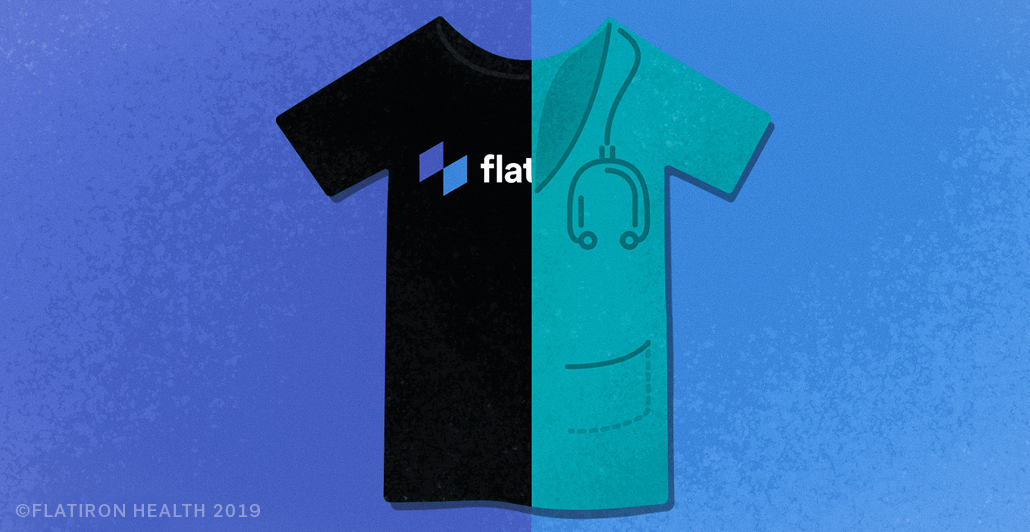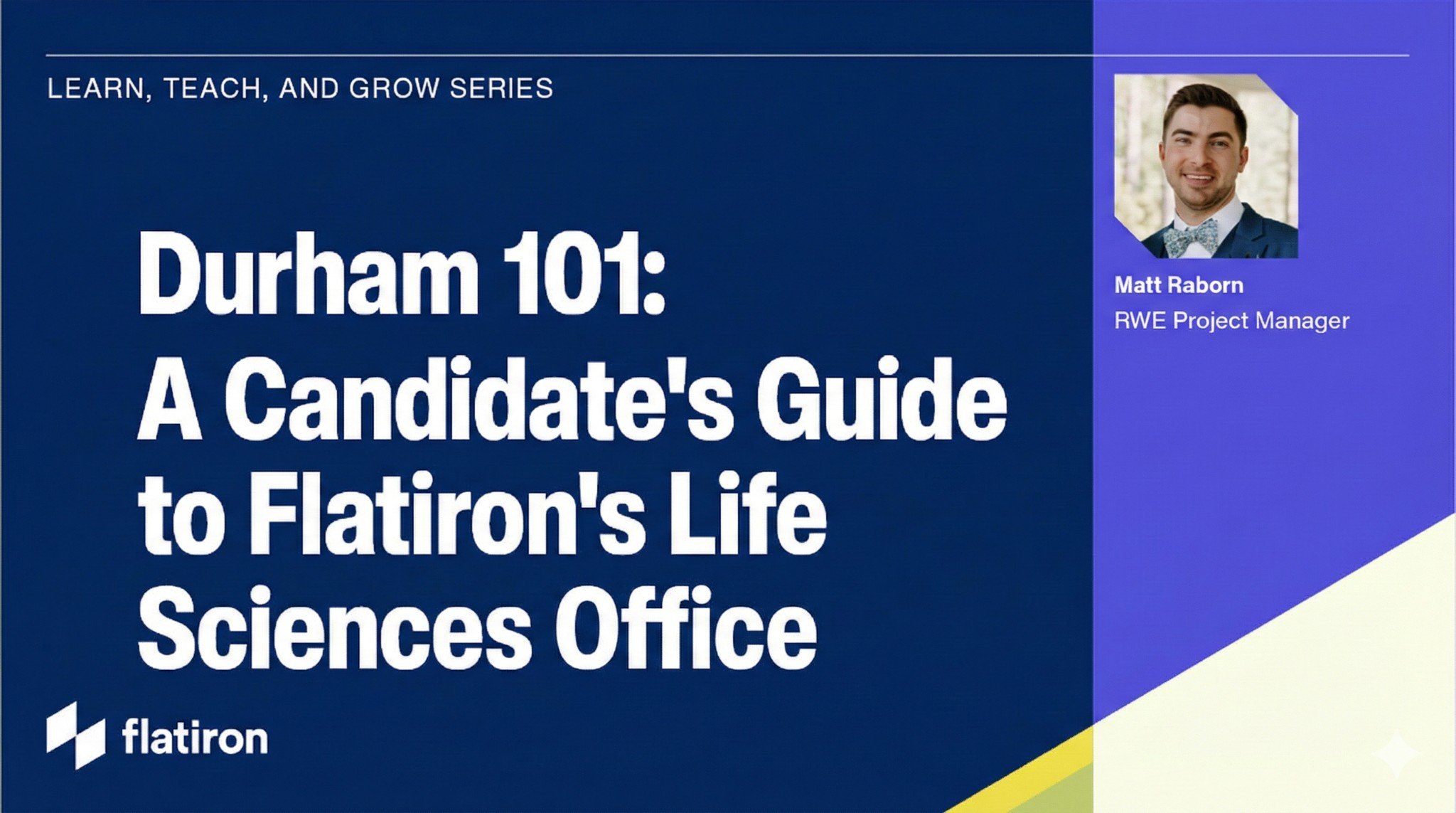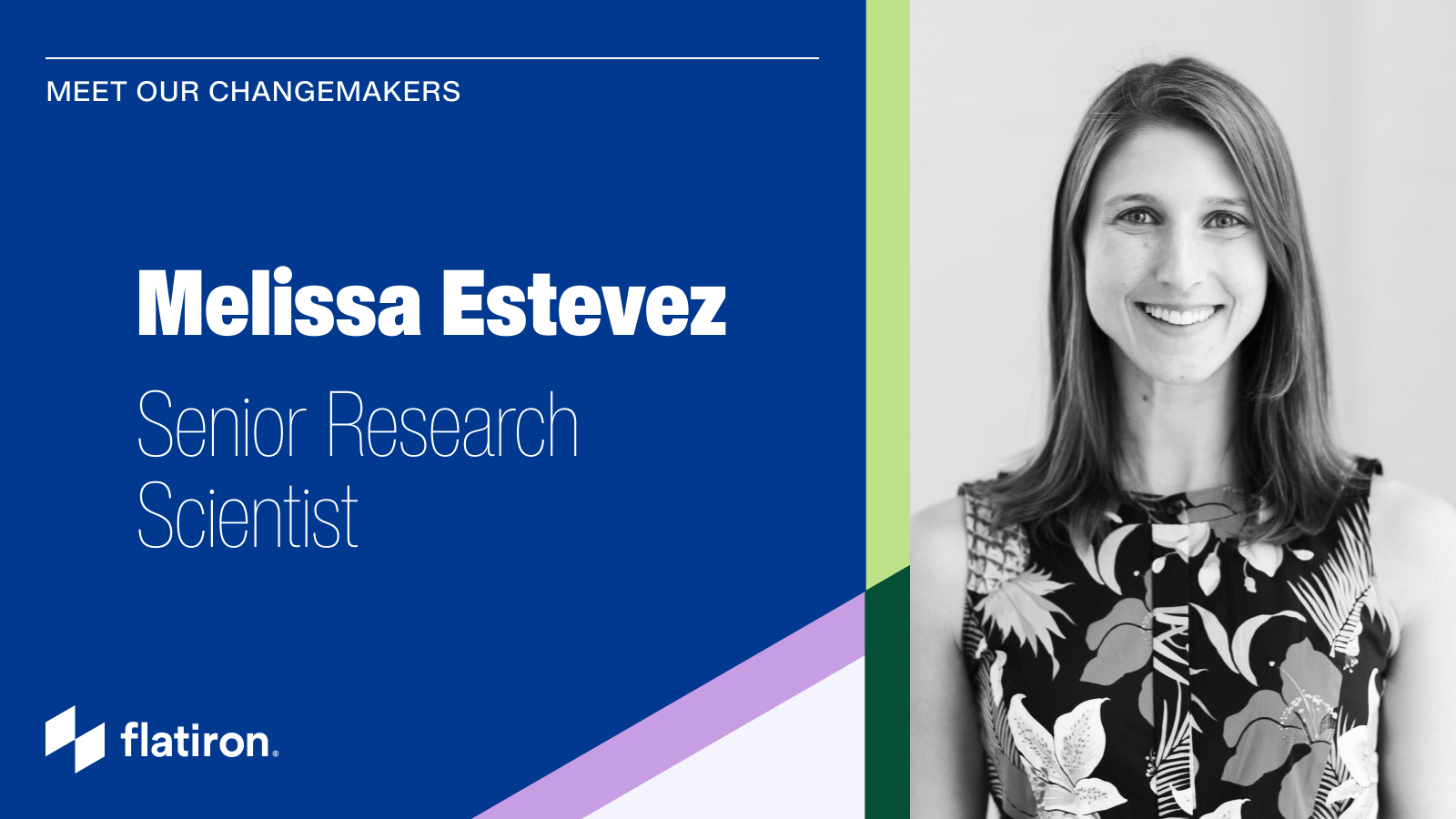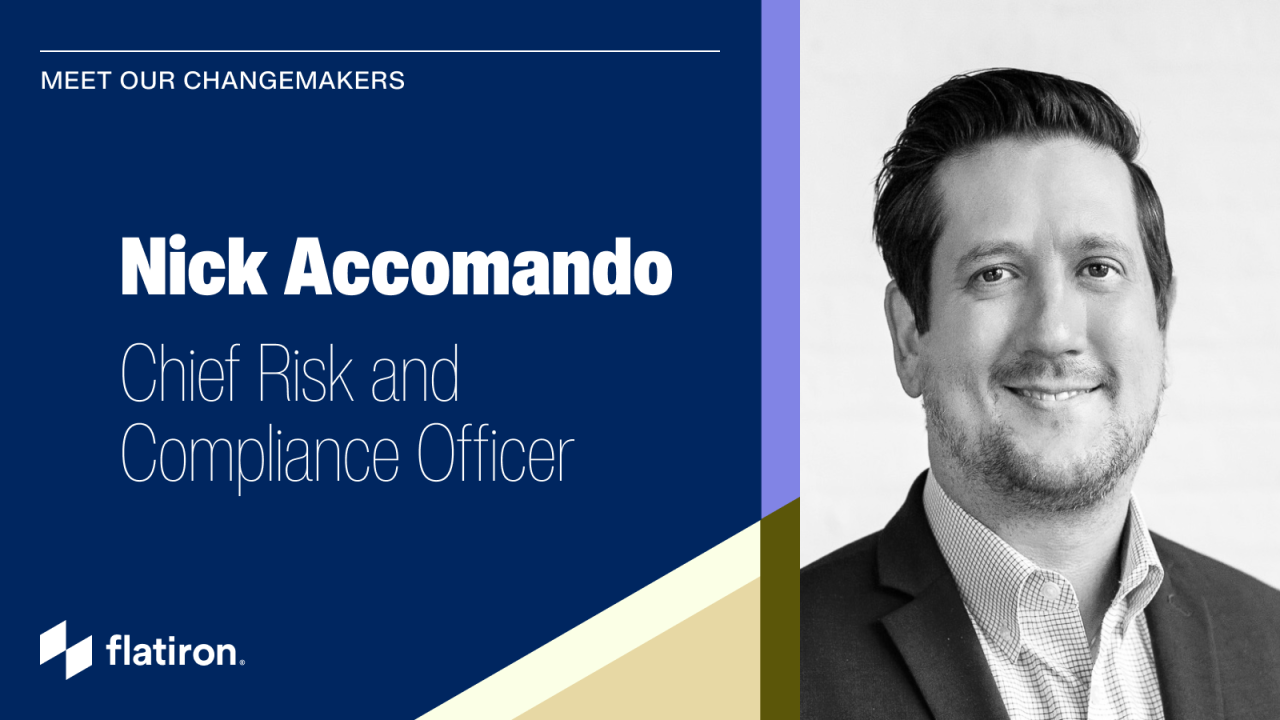I remember quite clearly the day my beloved vocation was given a new title. The morning was warm and bright, the setting a first-grade classroom filled with children excited to introduce their parents for the annual teach-in. I had donned a pair of scrub pants, a Flatiron T-shirt, and my old clinical research lab coat. Each article of clothing represented a different snapshot of my oncology nursing career. I held my breath as I heard my daughter boldly announce, "This is my mom, and she's a stay-at-home nurse." I recall briefly scanning the room, taking in a few polite smiles, quizzical glances, and the all too familiar look that unknowingly seems to say, "Well isn't that special?"
In July 2015, I joined Flatiron Health as a clinical abstraction manager for the breast, melanoma and hematology teams. I was armed with over a decade of experience in bedside care, clinical research and outpatient nurse management. Thrilling as it was to imagine myself working from the comfort of my own home in yoga pants with coffee in hand, I struggled with first-day doubts. Had I made the right decision? Could I really make a difference in the lives of patients outside a hospital or doctor's office? Was I even a real nurse anymore? After weeks learning the role of clinical abstraction manager, it was obvious that I had hit the proverbial jackpot in my career.
Flatiron's mission is " to improve lives by learning from the experience of every cancer patient." Through a process known as "abstraction," Flatiron captures key information about patient experiences from medical records to help build our de-identified datasets from which we can surface insights while protecting patient privacy. Abstraction utilizes my research and clinical skills: detailed chart review, clinical interpretation of complicated disease presentations and an uncanny ability to weave through a maze of discrepant documentation. Every chart is different, so my "nursing brain" is challenged and enriched by each new case. As manager of an incredible team of oncology nurses and tumor registrars, I not only have the privilege of further applying my skills to coaching each team member, but also developing policies, procedures, and educational materials used by our abstractors. Intellectual stimulation extends beyond the nursing school classroom and hospital preceptor experience — it happens in my own home all day, every day.
Real-world cancer data can appear disorganized, disjointed and just plain "messy" -- understandably so, considering the sheer number and variety of specialists involved in caring for a cancer patient. From primary care physicians to surgeons to radiation oncologists, every provider's documentation is uniquely tailored according to the role they play in helping care for their patient. In abstraction, these cases are first reviewed by the abstractor for specific data points which will be aggregated, de-identified, and then used by our research partners (e.g., stage of disease at presentation, development of advanced disease, biomarker status, etc). In the event a case becomes too difficult for the abstractor to untangle independently, it is escalated to an astute team we call the "Review Panel." Occasionally, the Review Panel comes across a truly baffling case requiring additional guidance, which is where I come in. Clinical abstraction managers receive some of the most difficult cases to deconstruct, and this is by far one of the most exciting aspects of the role.
Here's a hypothetical example of the type of case that commonly comes across my desk:
A patient presents with a history of multiple superficial skin lesions and new development of lung and nodal metastases. The first document available for review is a CT scan revealing a left upper lobe mass and extensive hilar and mediastinal adenopathy. The oncologist reviews this scan and notes during the first office visit that the working diagnosis is primary lung neoplasm vs. development of metastatic melanoma. Additional workup includes a CT-guided needle biopsy of a mediastinal node that pathologically, which confirms malignant melanoma. The patient presents again to the oncologist shortly thereafter, and screening for clinical trial is recommended. The record ends.
At face value, this may appear to be a simple case, but a few pieces of the puzzle are missing:
-
Pathology reports for the historical skin lesions are not available in this chart
-
We lack evidence to support that the historical lesions were invasive
-
The oncologist does not directly attribute the new lung and nodal disease to a skin lesion, given that the treatment decision would not have changed
These seemingly trivial details are crucial. Do we report a new unknown primary melanoma, or can we connect the new disease to a previous lesion? If so, which one? This is important because it will impact how we characterize the patient's disease.
This type of case draws from my past experiences. As a clinical trials coordinator, I had a conversation with a principal investigator who explained the nuances of superficial spreading melanoma as we screened a patient for our site's latest trial. Further recollection brings to mind a phone call I once had with a member of Flatiron's research oncology team; a nurse practitioner who invested time in explaining our approach to such ambiguous cases and how it related to the care of patients in the clinical setting. The parallel she drew between Flatiron data and the patients I had grown to cherish resounded then, and it continues to influence the challenging cases I review in my daily work.
Beyond the job perks of continuously learning, managing a dedicated staff and getting to wear stretchy pants every day, there lies a sobering reminder of why I joined Flatiron — each chart reflects an actual person. The story of a young woman battling advanced breast cancer while caring for three young children causes me to pause and glance at a handmade ornament hanging in my office, lovingly crafted for me by another woman with a similar story. The elderly gentleman struggling with the effects of therapy targeting his melanoma takes me back to another man whose hand I held to comfort him, his face as clear in my mind today as it was years ago. Each patient's experience continues to drive my passion for oncology nursing.
Three years have passed since those first-day jitters. The same questions I once asked myself have been asked of me by other scrub-adorned, aspiring abstractors, and my story has since been shared with yet another classroom full of young minds. Though my uniform has changed and tasks no longer include starting IVs or administering chemotherapy, I can confidently and proudly say that this real profession is making a real difference in the lives of real patients. I am proud to be a stay-at-home nurse.



